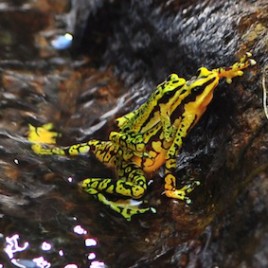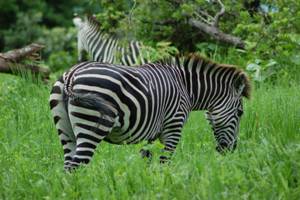A new study shows that tree swallows between Montreal and Sherbrooke became fewer (-19% population decline) and smaller (-8% weight loss) from 2005-2011, especially the females. Insect-eating birds are in decline all across northeastern North America, and pesticide use is a suspected culprit, but the authors did not find a link between weight loss and […]
Tag: environment

Warblers limited by winds during migration
A new study shows that survival and productivity of the yellow warbler depends most strongly the weather conditions during migration, rather that those in its breeding or wintering grounds. Researchers banded and monitored 380 of the tiny songbirds, which which breed in western Canada and overwinter in Mexico and Central America, over seven breeding seasons. […]
Why climate change is drying out Australia while Antarctica resists the warming trend
By developing a 1,000-year history of wind currents over the Southern Ocean, an Australian-led research has discovered the answers to two climate change-related mysteries. Firstly, why southern Australia is drying out, and secondly, why Antarctica isn’t warming as much as the rest of the planet. Their work shows that the winds encircling Antarctica have sped […]

How a harmless alga became a lethal parasite
A new genomics study shows how a free-living, photosynthetic alga – that is, a type of green pond scum – evolved into an insect parasite that kills juvenile blackflies, caterpillars, beetles and mosquitoes. The sequenced genome of Helicosporidium shows that it kept nearly all its genes except those required for photosynthesis when it made the […]

Will a deadly fungus wipe out frogs in your area?
Batrachochytrium dendrobatidis is a fungus that causes a deadly skin disease in frogs and other amphibians, and is one of the factors contributing to the global decline of amphibians. A new mathematical model shows that the reproduction quotient – that is, the average number of new spores produced by an initial spore over its lifetime […]

New nanoparticles provide superior pollution prevention
Removing toxic carbon monoxide (CO) from car exhaust and other pollution sources could soon be cheaper and more efficient, thanks to a new type of nanoparticle catalyst. Catalytic converters that turn CO into benign CO2 rely on expensive metals like platinum to speed up the chemical reaction. The new nanoparticles combine platinum with cheaper iron […]

Public education and firewood subsities could help stop invasive pests 
The spread of the emerald ash borer and the Asian longhorned beetle has been helped thanks to fire. Each species is able to hide among pieces of firewood to travel to new habitats. A new study uses mathematical modelling to show that public education coupled with a subsidy to decrease the cost of local firewood […]

Early plant-eaters evolved from tiny meat-eaters
A new paper shows that giant herbivores evolved from much smaller creatures like the newly discovered Eocasea martini, a carnivore only 20 cm long. The study shows that similar transitions of small carnivores to large herbivores happened independently at least five times, setting the stage for the giant herbivores of 270 million years ago. These carnivores […]

Methane leaks from Pennsylvania shale gas well during drilling
Using data from an aircraft survey of southwestern Pennsylvania in June 2012, researchers have shown that shale gas wells in the drilling phase emit between 100 and 1000 times more methane than previously thought. The authors call for an examination of all aspects of natural gas production activity to improve methane inventory estimates and identify […]

Into thin Martian air
By analysing impact craters on the Martian surface, researchers have worked out that the atmosphere on Mars 3.6 billion years ago was still too thin to support life. The researchers estimate that the atmosphere at the time would only be about 150 times thicker than today. The authors suggest that if Mars had a thick […]

Million-year-old plankton comes back to life
Scientists have recovered a form of plankton thought to be extinct for a million years. It is the only surviving member of a plankton lineage common 50 million years ago. The heat-loving, single-celled organism Dapsilidinium pastielsii was thought to have disappeared from the fossil record because of colder ocean temperatures. However, a group of […]

Engineering easier trees
Wood contains both cellulose and lignin. Cellulose is the key component of paper, cardboard and other paper products. Lignin a material that is generally discarded as waste or burned for heat energy. The process of separating the two requires the use of both valuable energy and harmful chemicals. Researchers have genetically engineered poplar trees to […]
Scientists eager to participate in public discourse on environment
Scientists are willing to take part in public discourse on environment, but they often perceive themselves as not competent enough, a new study says. A survey of 500 researchers have shown that 98 per cent said they would be willing to advocate for a policy if they felt there was sufficient scientific evidence to support […]

Atlantic temperatures could help explain colder winters
The extreme cold weather observed across Europe and the east coast of the US in recent winters could be partly due to a natural, long-term pattern of warming and cooling Atlantic waters, known as the Atlantic Multidecadal Oscillation (AMO). Earth scientists have shown a connection between this pattern and changes in atmospheric circulation that allow […]

Zebra stripes may deter biting flies
Why do zebras have stripes? A new study suggests that rather than serving as camouflage, they may have evolved as a way to avoid fly bites. Researchers found that among equids (horse-like animals), striped species such as zebras overlapped the range of flies known to avoid black and white surfaces. Moreover, they didn’t find any […]

Tropical “Black Witch” found in Churchill, Manitoba
In Mexican folklore, the moth known as the Black Witch (Ascalapha odorata) is a bad omen, a harbinger of death. The species is normally found in tropical regions, but does occasionally come to southern Canada during the summer. A new paper documents a sighting of this species in Churchill, Manitoba, the furthest north it has ever […]
